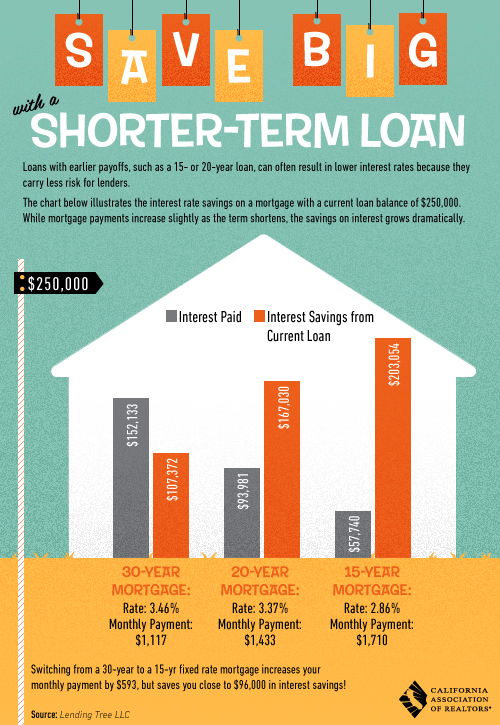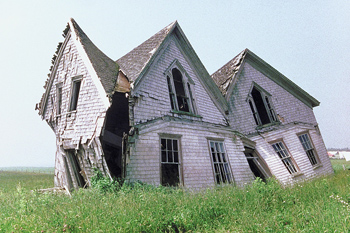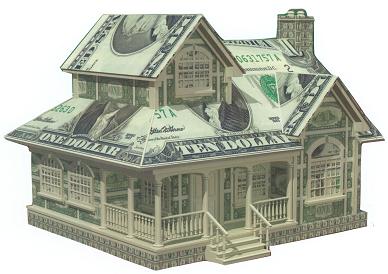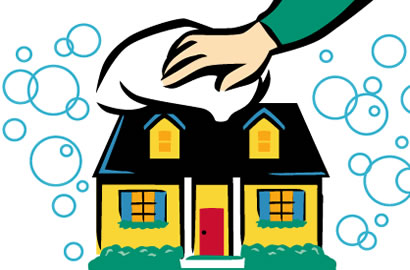The market is so hot right now it seems the only way to even have a chance at purchasing a home is to put your offer in a contingency to view and inspect the property. What are your thoughts on this process? Is this creating another false bubble? Laura.A.Key@gmail.com

As soon as it hit the market, the four-bedroom Sea Cliff home inspired a bidding war, with the top two prospective buyers both offering well above the multimillion-dollar listing price, in cash.
In today's fevered real estate market, that's no longer unusual.
But there was a twist: Both bidders were located in China, and both made their big-bucks offers without ever setting foot in the house. One of them ended up buying the house for $3.1 million, substantially above its $2.8 million list price.
"At first, I was really, really surprised and kind of suspicious," said Nina Hatvany of Pacific Union, the listing agent. "I was concerned that they hadn't seen the property. After all, they might not like it when they saw it."
But since both offers looked serious and included proof of funds, "I said to the sellers, 'This seems like a new buyer profile. You might as well take it.' "
Buying homes sight unseen is a small but growing trend in the Bay Area, fueled by the over-competitive market and burgeoning interest by international buyers - and enabled by technological advances.
Buyers might make offers without seeing a house for several reasons: They live elsewhere or are away for business or personal reasons; they had scheduling conflicts and couldn't visit before bids were due; they're investors accustomed to buying just based on property characteristics; or they're taking a scattershot approach of making lots of offers and seeing which get accepted.
Not completely blind
Today's array of tech tools means they're never truly buying in the dark, however. Besides extensive photos and video tours of homes for sale, plenty of websites offer the chance to learn about neighborhoods and schools, and research comparable sales.
Often, those who bid sight unseen have a chance to tour the house during escrow and can still back out. But sometimes, as in the Sea Cliff case, they're willing to pay huge amounts based on photos, videos and their agent's recommendation. (The winning Sea Cliff bidder also had a family member visit.)
Professional investor Paul Livson of Danville has been buying and selling properties for 30 years, both for rental income and to resell. Bidding before visiting is a tactic he and others increasingly adopt, he said.
"Lots of people are doing it now because they know they need to get their offer in quickly," he said. "The market conditions are such that if you wait to see it, if it's any kind of decent deal, there are already five to 10 offers on their way, and yours will be at the back of the pack. I need to be at the front of the pack."
And while he bids blind, he never buys blind.
"The risk is limited because you have an inspection period, so there's always an opportunity to see it and walk away" if it's not up to snuff, he said.
Still, there can be surprises. He's now buying a Pleasanton condo for $279,000. When he first saw the unit - after his offer was accepted - some issues surfaced: cigarette odors, marred floors, outdated bathrooms. Since it's a short sale, in which a bank has final say, it will be difficult to negotiate the price down based on the unit needing work, he said.
But he won't walk away. "With market conditions the way they are, it's still a good value for me," he said.
Riskier deals
Some sales, such as courthouse auctions that are the final stage in the foreclosure process, don't offer a chance to see properties in advance, nor is there an inspection period. While many investors bid at those auctions, "that's much more risky to me," Livson said. "I don't like to buy without having at least a day or two to inspect it. You could have a property that looks great on the outside but has $50,000 worth of termite damage.
His agent,said she's increasingly representing investors who want to bid sight unseen for efficiency, and she has created a "buyer concierge" program in response. "We hunt the properties for them," she said.
Some agents worry that such bidders muddy the waters.
"I am concerned about buyers feeling that this is a viable option in competition," said Bebe McRae of the Grubb Co., who has sold some properties to people who bid blind. "I heard seven offers yesterday on (a property) and the deciding factor for the sellers in choosing the winner was all about the confidence they felt in the buyers being able and willing to close successfully. The buyers went to the property on several occasions and also did their inspections prior to writing the offers."
People who have made the leap of faith to bid blind - especially those planning to live in the home - said having a knowledgeable real estate agent is a big plus.
Fernando Filippelli was overseas for business reasons when a Berkeley home came on the market, in a neighborhood he knew he liked.
"I had four different friends visit the property for me. One of them is an architect," he said in an e-mail. "This, plus the fact that (my agent) provided me all types of info, made me feel comfortable to put a bid on the house."
Inspection by FaceTime
Friends and relatives thought Adam Chang and Gwen Liu were crazy when the first-time home buyers made an offer on a Kensington house while they were in Taiwan, visiting sick relatives. Chang had never seen the house in person, although Liu had.
"We did the home inspection over FaceTime, Apple's video-chatting service," Chang said. "Our agent, Mark Biggins (of Redfin), had an iPhone, I had an iPad. I could see how high the ceilings really were. If they said a floor was sloping slightly, I could get a sense that it wasn't that bad. They took me down into the crawlspace. For being halfway around the world, it was great to be able to be virtually present."
The couple returned to the United States a few days before they needed to lift the inspection contingences.
"I was able to make sure everything was copacetic; it was better than I expected," he said. "It was all about taking that leap of faith."
Source: Carolyn Said is a San Francisco Chronicle staff writer.



















